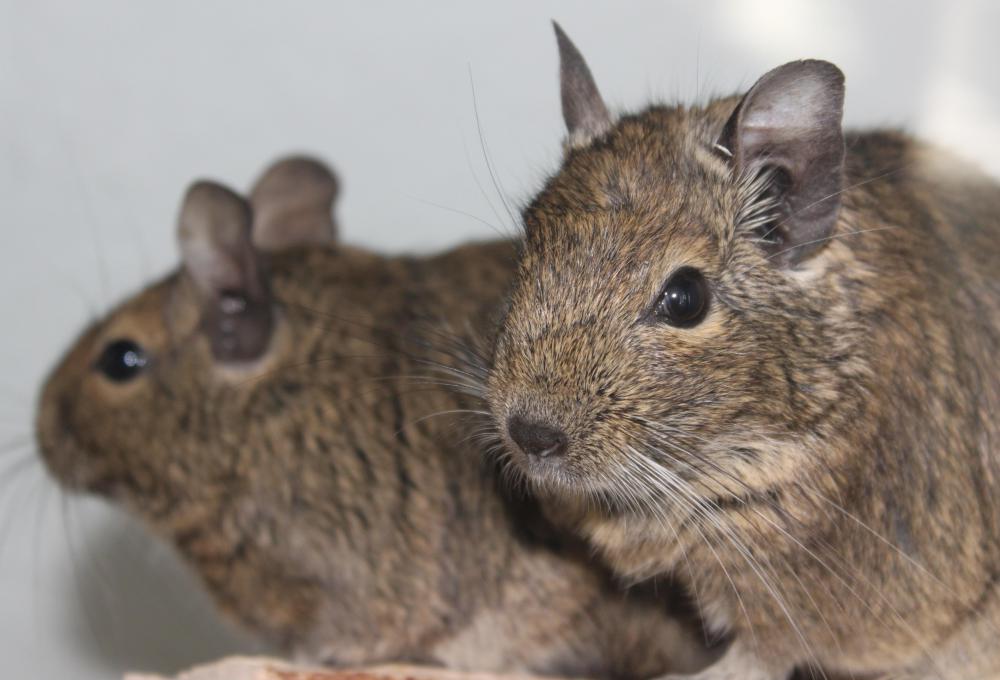What Is an Octodon?
The Octodon genus of gerbil-like rodents are centered around the nation of Chile, running down the west coast of South America. Though three of the four family members — O. bridgesi, O. pacifica and O. lunatus — are threatened species, the remaining member of the clan, Octodon degus, can be found in plentiful numbers throughout the foothills of the Andes Mountains as well as in pet stores across the globe. Scientists have been particularly interested in this latter, so-called common degus for decades, studying its communal social order, highly developed coordination skills, and uncanny internal clocks.
Though their looks are similar, each Octodon species occupies a slightly different niche in and around Chile. The lunatus, or moon-toothed degus, tend to live along the rocky Pacific shores. Pacificus is native only to the tiny Mocha Island, off the Arauca coastline. Sticking to the mountains are the degus and bridgesi clans. The bridgesi, or Bridges' degus, stretches all the way across the Andes to Argentina, while degus stays only on Chile's western side of the mountains.

According to the International Union for Conservation of Nature and Natural Resources (IUCN), the common degus is considered a species of least concern, largely due to its prevalence both inside Chile and throughout the pet cages of the world. The three other Octodon species, however, face greater challenges. As of 2011, the IUCN considers O. pacificus a "critically endangered" species, O. bridgesi "vulnerable" and O. lunatus "near threatened." Deforestation due to agriculture or development is widely blamed for most of these declines.

Most of the Octodon species are nocturnal, though the common degus is diurnal, meaning that it sleeps at night. Perhaps this and the species' plentiful numbers are why scientists have chosen to study them the most. These animals have been used to better understand the circadian system common to mammals. This allows for environmental signals to spur biological changes like ovulation or even changes in sleeping patterns, switching from nocturnal to diurnal habits. One study even determined that degus see ultraviolet light, which allows their urine to glow and serve as a guide post.
The social order and customs of degus are centered around the burrow, which is another focus of zoological study. According to the University of Michigan's Museum of Zoology, a few males and several females will often share a single burrow, using organized burrowing chains to create a complex system of escape routes. Not only do the mothers share in breastfeeding the babies, but the males spend time huddling with the very young — without any observed infanticide.
AS FEATURED ON:
AS FEATURED ON:












Discuss this Article
Post your comments